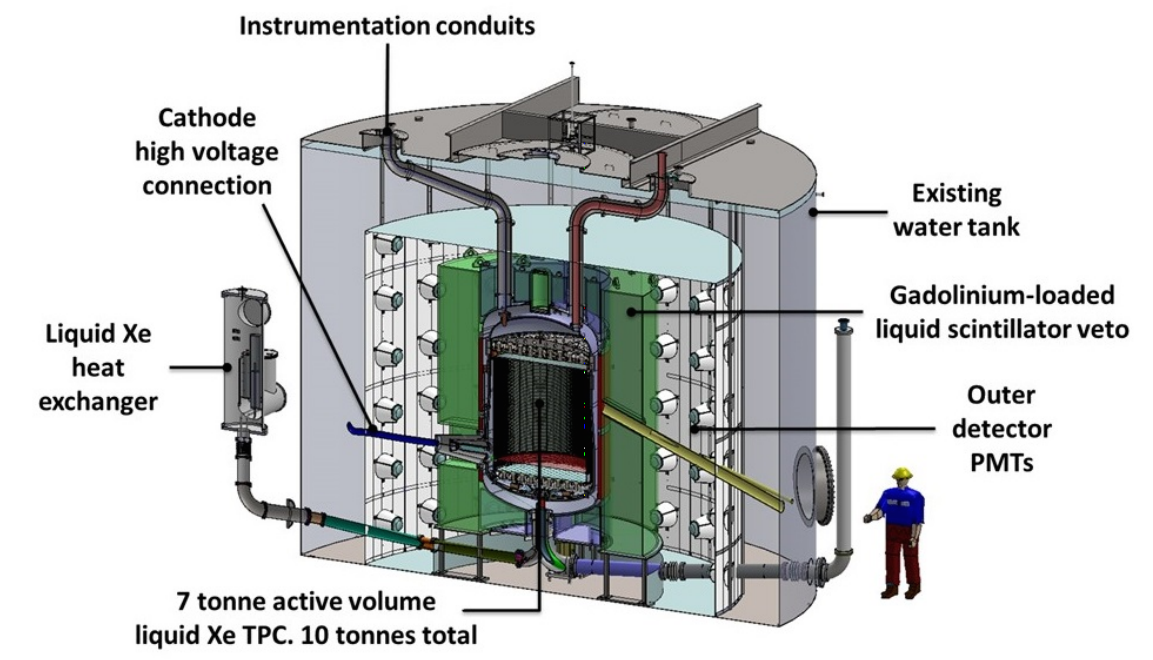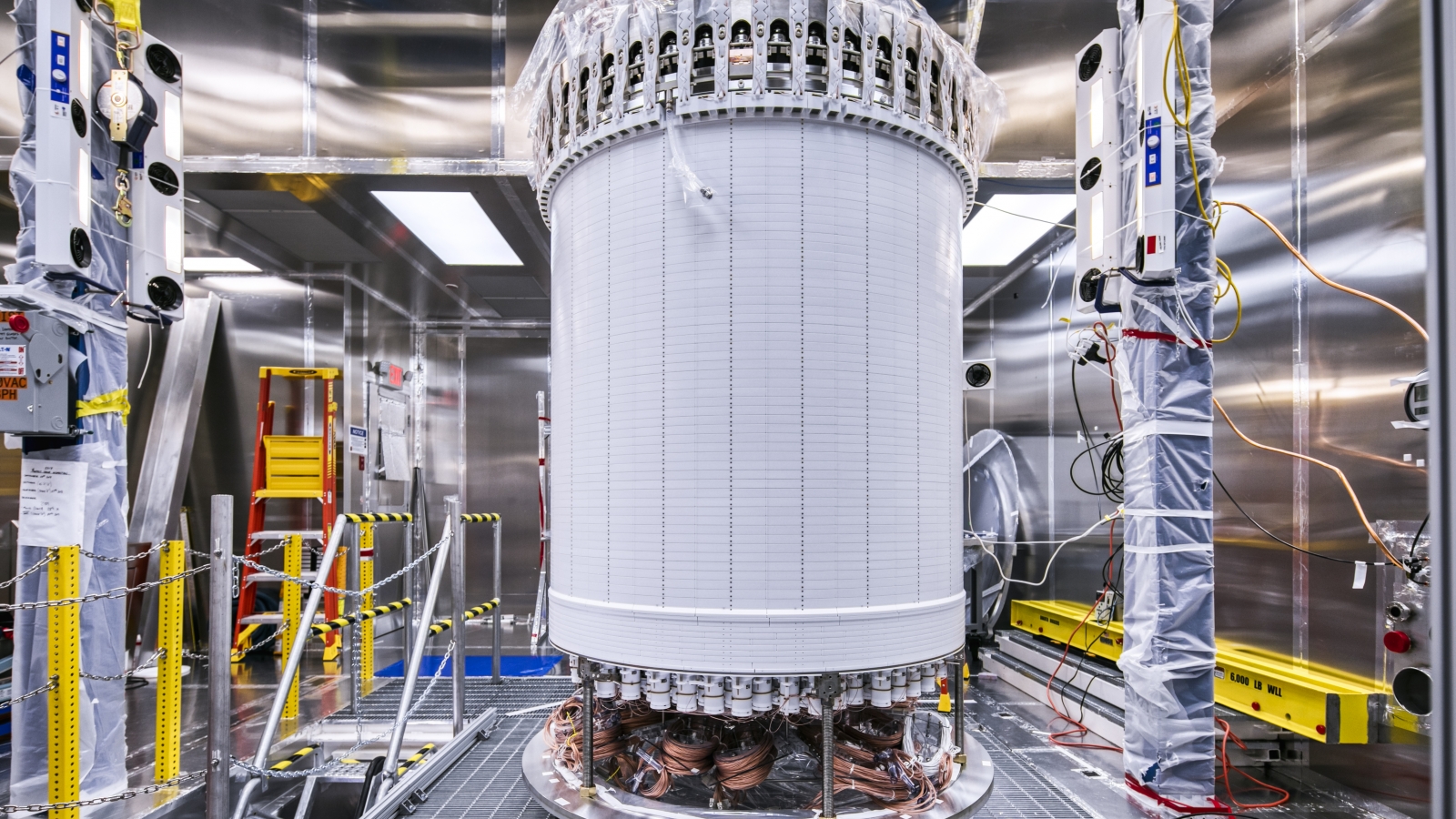LUX-ZEPLIN (LZ)
LUX-ZEPLIN (LZ) is the world leading search for elusive dark matter particles. It's operated 1 mile under the Black Hills of South Dakota, in the Sanford Underground Research Facility (SURF).

LZ employs two-phase (liquid/gas) Time Projection Chamber (TPC) technology and contains seven active tonnes of liquid xenon. Collisions of dark matter particles with the xenon atoms would lead to light signals in the detector. Being sensitive to such rare interactions is only possible in a very quiet environment, where all backgrounds are thoroughly understood. To achieve this, the experiment is located 1 mile underground, and care has been taken in choosing radio-pure detector materials. Additionally, the central detector is surrounded by a liquid scintillator outer detector, used as a veto to improve the rejection of unwanted background events in the central region.

The LZ collaboration consists of 250 scientists in 37 US, UK, European, Australian, and Korean institutions. UCL co-led the crucial Backgrounds and Screening Work Package during the design and construction of the experiment. The results of the material screening are now used to construct the high-precision Background Model against which any possible signal will be evaluated. You can find more info about our cutting-edge radio-purity assay facilities used to screen potential construction materials here. UCL has also held significant leadership roles in constructing and commissioning the experiment.
Our 2024 WIMP search set the most stringent constraints on WIMP-nucleon scattering cross-sections and achieved 3σ WIMP discovery potential in previously untested parameter space. UCL was a locus of leadership for this analysis, with Prof. Chamkaur Ghag being the LZ Spokesperson and Dr. Amy Cottle being the working group lead for the WIMP search analysis. Also on our team for this analysis were the working group leads for statistical inference and wall background modelling. Our roster of PhD students contributed to a variety of critical analyses including: cuts and data quality, simulations, background modelling and background mitigation techniques.

